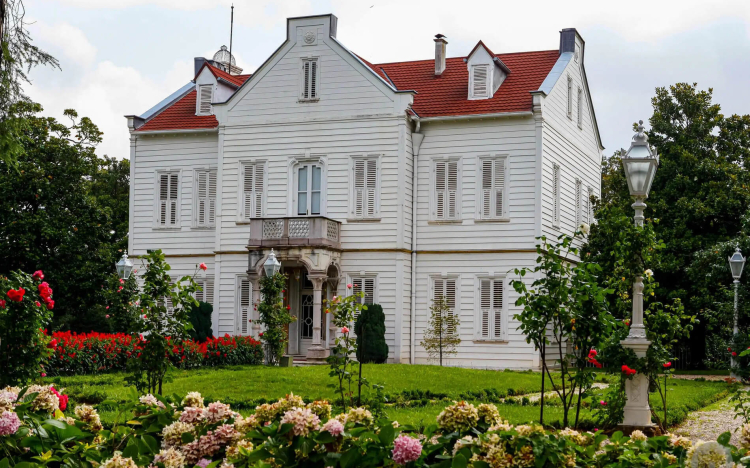Maslak Pavilions, where rulers and princes once lived in the unique historical texture of Istanbul, have hosted different stories over time and have undergone many changes until today.

Maslak Palaces: Tracing the Footsteps of a Historical Legacy
Nestled in the unique historical fabric of Istanbul, the Maslak Palaces once housed sultans and princes, and over time, have accumulated many different stories while undergoing numerous transformations. These palaces were once assigned to Şehzade Abdülhamid Efendi, the nephew of Sultan Abdulhamid II, one of the most prominent figures in the Ottoman Empire.
The Maslak Palaces were constructed by Sultan Abdülaziz in the 1860s and were later allocated to Şehzade Abdülhamid Efendi in 1868. The palaces were named after the nearby "Maslak" water distribution reservoir, which inspired their name. Until the time he was called to the throne, Şehzade Abdülhamid Efendi engaged in agricultural work at the palaces, acquiring surrounding land to expand his estate. During his reign, this farm became known as the "Maslak Çiftlikât-ı Hümâyûnu," or "Maslak Imperial Farm."
In the Republican period, between 1937 and 1982, the palaces were used as a military sanatorium. However, in 1984, the National Palaces Administration restored the site and opened it to the public as a museum-home. The architecture of the Maslak Palaces reflects the traditional Turkish house plan, and today, it occupies a vast area of approximately 170,000 square meters.
The Maslak Palaces offer visitors a unique experience of Turkish history and architecture. With its rich history, the complex includes buildings such as the Kasr-ı Hümâyûn (the Harem section), the Mâbeyn-i Hümâyûn (the reception hall), and the Seyir Köşkü (the viewing pavilion for equestrian drills). The palaces are also renowned for their large garden and greenhouse, where rare tropical plants are cultivated.
Maslak Palaces is an important destination that sheds light on Istanbul's rich history and cultural heritage. You can visit this historic site every day of the week, except for Mondays, to explore its fascinating legacy.